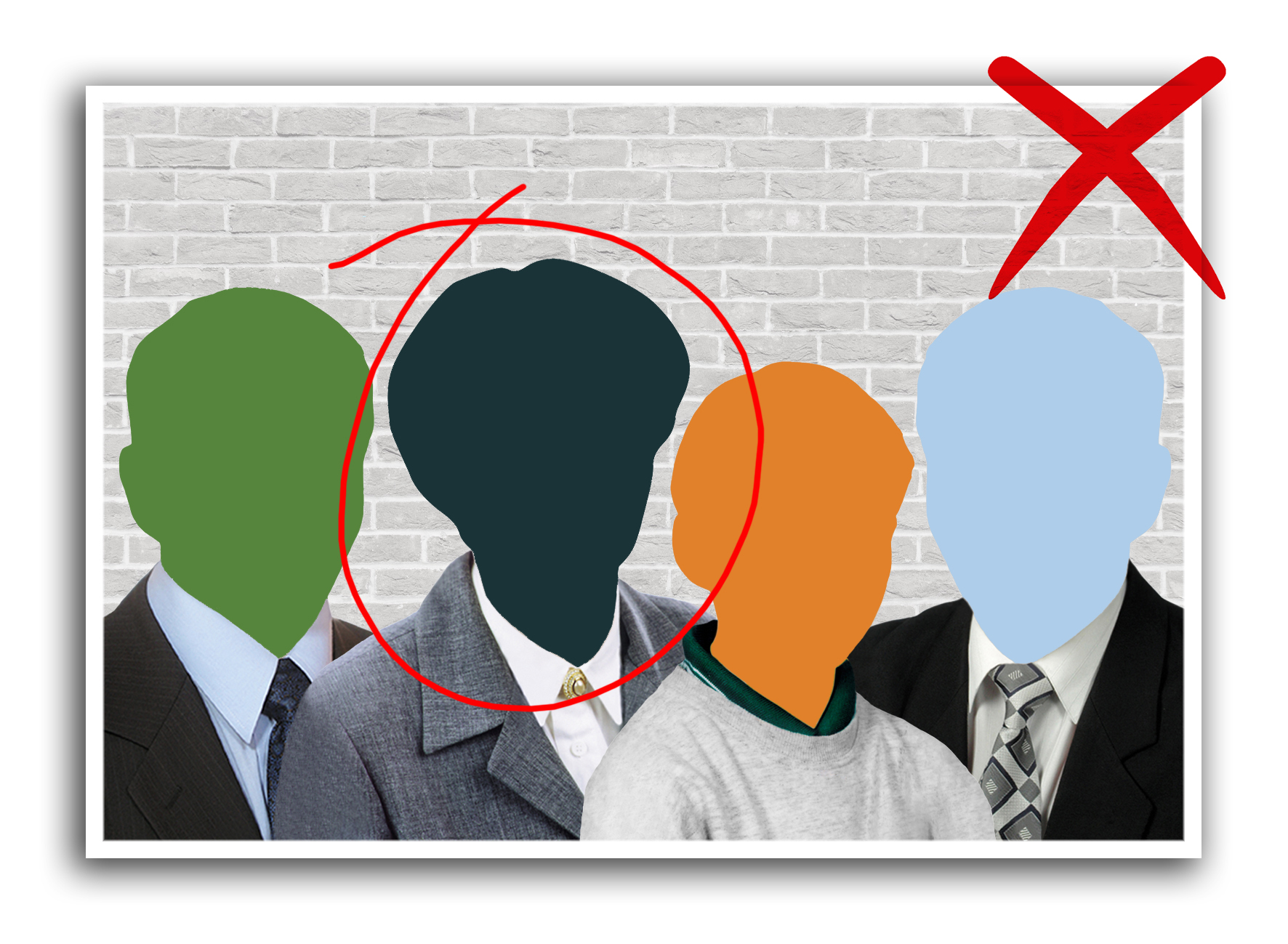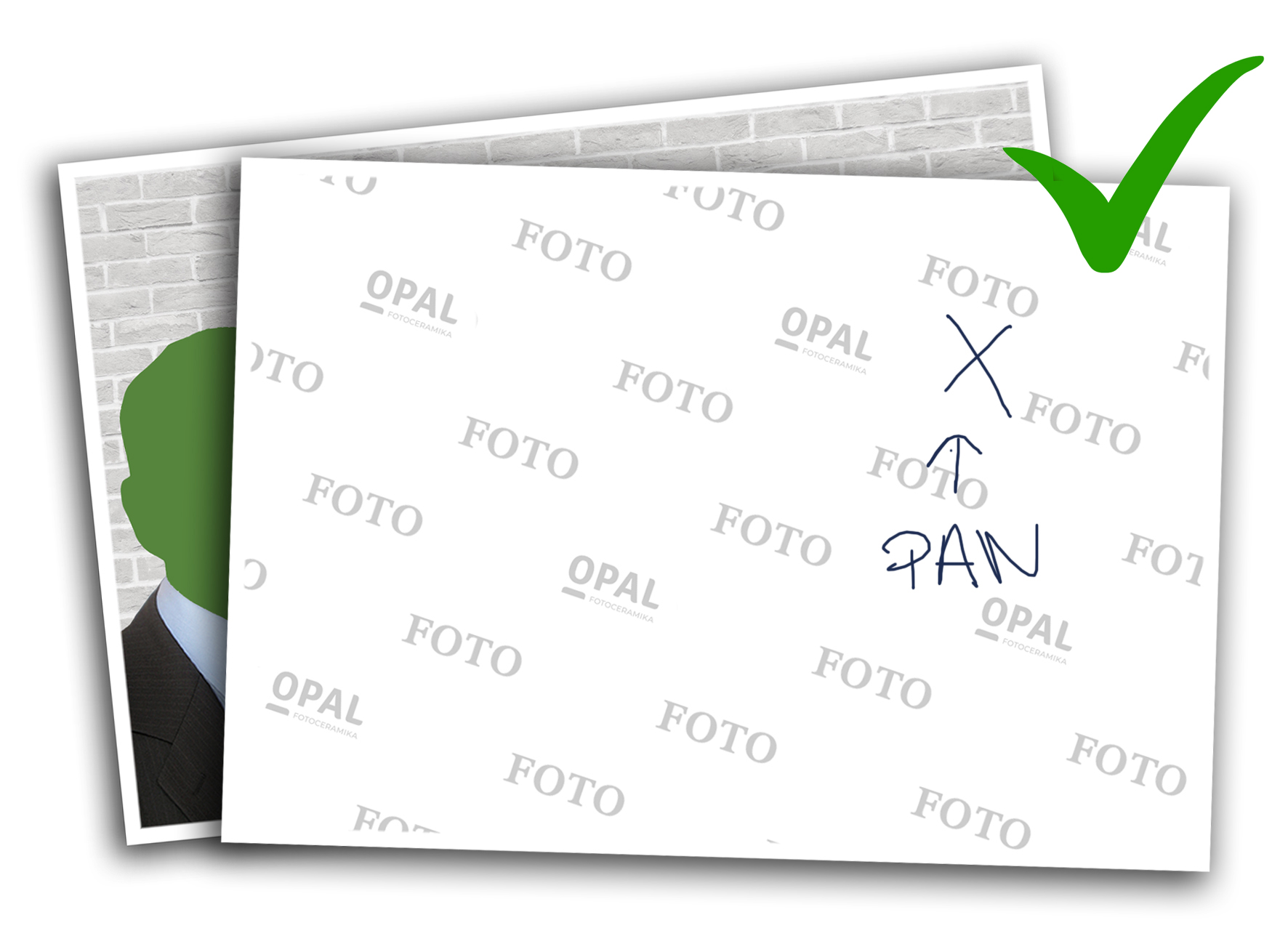
How should I mark the person on the group photo?
How do I mark a person in a group photo?
Placing an order for a tombstone photo seems to be quite a simple thing to do - it is enough to deliver the photo to the photoceramic producer and provide selected parameters such as shape, format, color and possible changes. The case is clear when the photo shows one person, it is a professional photo with uniform face illumination, of good quality (a large amount of detail is visible after zooming in). But what if there is no such photo, and the only photos of the deceased's family are amateur and group photos, e.g. from occasional parties.
First of all, it is worth searching family heirlooms for some document, for example, an older generation ID card (the latest evidence is not the best way to make photoceramics due to the large number of watermarks). It is worth contacting other family members, it is possible that someone else has a photo of sufficient quality to make photoceramics from it. However, if all our efforts have not brought a result and we cannot find a single professional photo of a given person for nothing, and the only thing we have at our disposal is a group photo, then it is important to clearly and clearly mark the person to whom the porcelain or crystal is to be made sepulchral.
Producers of photoceramics encounter various ways of marking people in group photos, but some of them add additional and unnecessary work to the graphics, and sometimes even force the need to change the background or clothes.
What not to do when tagging a person in a group photo?
- First of all, please do not circle the person with a circle or mark them with a cross in the photo! Apart from the fact that such scratching with a pen on the photo destroys them - many photos are antique photos, often pre-war - additionally necessitates changing clothes or backgrounds. Why? Please take a look at the graphic below (Fig. 1) showing a diagram of a group photo with a person marked with a pen (red). During graphic processing, it is necessary to remove the pen, which means unnatural fragments of clothing or background, or a complete replacement of these elements, which is often associated with an unattainable fidelity to the original.

Fig. 1. A selected person circled with a pen. This method of selection destroys the photo, and also forces the removal of the highlight from the clothes and the background.
- Another common way to mark a person in a photo is to stick a colored card suggesting the person. Although producers of photoceramics will certainly appreciate their efforts to keep the photos intact, the card often peels off or changes its place during shipment.

Fig. 2. The note has shifted during transport.
Well, since we know how not to mark a person in a group photo, the question arises how to do it correctly?
- One solution is to mark a person with a cross on the back (Fig. 3) if it is a photo on photographic paper, so against the light it will be visible which person has been marked. In this way, the person is clearly marked and the original has not been damaged.

Fig. 3. When looking against the light, the cross on the back of the photo clearly identifies the person you are talking about.
- Another good solution is to draw a diagram of a group photo or take a photo or photocopy of it and mark the selected person on the reproduction, but remember to also provide the original photo or a good quality scan of it.

Fig. 4. A diagram of a photo drawn and the selected person marked on it.
- Another way that customers often use is description. However, in this case, be very careful that the description is unambiguous. Please note that the person accepting the request may understand the description in a different way than the author meant. For example, "the gentleman on the left of the lady" in a picture that shows a woman and two men on the sides is not a clear enough term. (Fig. 5) Is it the man on the left looking at the photo or from the perspective of the woman in the photo? Although it may seem obvious to the reader, each photoceramic producer met customers who had the first meaning in mind, but also those who had the second meaning in mind. Often the spelling "old lady" is also ambiguous when the photo shows several women of different ages and it is not obvious to an outsider which of them is the oldest. When indicating descriptively a person from a photo, it is worth noting their unique, unambiguous feature, e.g. a gentleman in a tie, a lady in white shoes or a lady holding flowers, a gentleman with a hand in her pocket.

Fig. 5. Photo signed "gentleman on the left of the lady" Which man is it about?
Appropriate clear and unambiguous, but at the same time not interfering with photography, marking a person in a group photo is a relatively simple task, as long as we keep these few tips in mind. It will certainly save the work of graphic designers and unnecessarily wasted time of people accepting orders to inquire and explain what will result in a faster execution of the order, i.e. shorter implementation time. In case of doubt, it is always worth asking the photoceramics producer about the best way to mark a person in a group photo.









